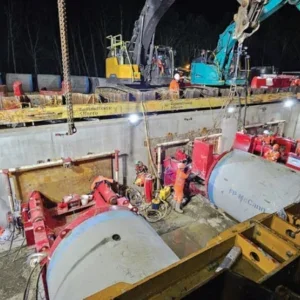The China Railway Society invited TAC to send a representative to Beijing to make a presentation about the Montreal underground. I was glad to represent TAC for this event organized by the Tunneling and Underground Works Branch of China Civil Engineering Society. I attended the workshop and made a presentation during this event entitled ‘The Montreal Underground – Historical and Geotechnical Review’. The workshop was attended by more than 100 people and was a large success. Other international representatives were also invited to present and are listed below:
- Han Admiraal, Netherlands
- Antonia Cornaro, Switzeland
- Chungsik Yoo, Korea
- Arnold Dix, Australia
- Jairo Pascoal, Brazil
- Nikolaos Kazilis, Greece
- Zaw Zaw Aye, Myanmar
- Rama Ventka, Singapore
- Angelo Zigon, Slovenia
- Aphichat Sramoon, Thailand
The conference also included keynote speakers from China with topics like China’s tunnelling development and the new Badaling Tunnel. With special emphasis on development of tunnelling over the past 40 years in China, including the development of the Beijing-Zhangjiakou High-Speed Railway and design of the new Badaling underground tunnels and station. Among other striking numbers presented, there are more than 1,000 tunnels under construction at present in China, totalling 4km of tunnel excavation per day.
The Beijing-Zhangjiakou High-Speed Railway is a key part of infrastructure for the 2022 Winter Olympics. It consists of 174km of high-speed railway, expected to be completed by the end of this year and to become a vital link between these two cities. The railway will have 10 stations from Beijing to Zhangjiakou, and the line around Badaling is considered the most challenging as it will consist of a 12km-long drill and blast tunnel that includes the underground Badaling train station.
The station is located 102m underneath the Great Wall of China, and will be three levels. It is expected to be the deepest and the largest high-speed railway station in the world with a maximum span of 32m excavated in altered granite.
One of the highlights of the workshop was visiting the underground Badaling station work site, followed by a visit to the Great Wall, which located above the future station. Also, a visit of Tiananmen Place was done back in Beijing.
The organizing committee, led by ITA/ AITES president Jenny Yan, was very welcoming and enthusiastic, with a very well-organized workshop featuring a high technical level and great innovations.
Overall the visit has shown the international participants that China is doing very impressive works and technical development is on a fast-track mode.






